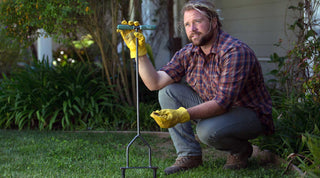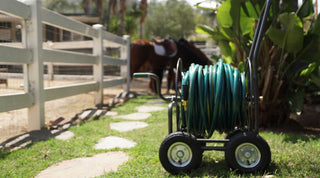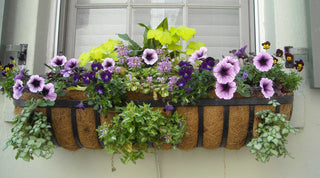
Introduction: Understanding the Importance of Hose Reel Maintenance
Ah, the joys of tending to our green spaces! Whether you're a seasoned gardener or a novice with a newfound love for nurturing nature, one tool stands tall among the essentials: the hose reel. It's the unsung hero of the garden, faithfully providing hydration to our beloved plants. But just like any hero, it needs a bit of care and attention to stay in tiptop shape. In this guide, we'll dive into the world of hose reel repairs and maintenance, empowering you to keep your garden gear functioning flawlessly for seasons to come.
Common Hose Reel Issues and How to Identify Them
Picture this: you're in the midst of a watering frenzy, only to find your hose reel refusing to cooperate. Sound familiar? Don't fret; you're not alone. Hose reels, like any mechanical contraption, can encounter their fair share of hiccups. From leaky connections to stubborn retractors, here are some common issues you might encounter and how to spot them:
Leaky Hose Connections: If you notice water escaping from the connections between the hose and the reel, it's likely due to worn-out washers or loose fittings.
Jammed Retractor: Is your hose refusing to rewind obediently into its reel? A tangled hose or debris lodged in the reel mechanism could be the culprit.
Cracks or Damage: Inspect your hose reel for any visible cracks, rust spots, or signs of wear and tear. These could compromise its structural integrity and lead to leaks or breakage.
Step-by-Step Guide to DIY Hose Reel Repairs
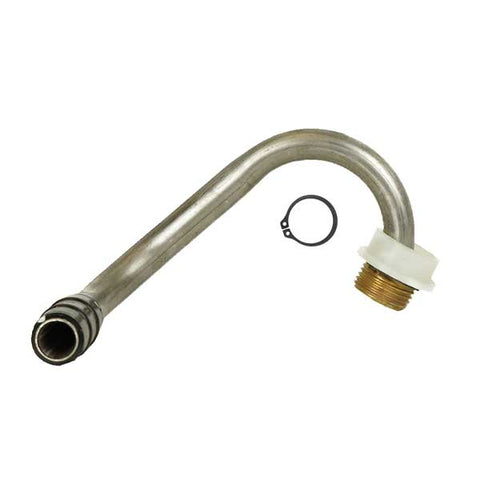
Fear not, intrepid DIYers! Many hose reel issues can be tackled with a bit of elbow grease and a handful of tools. Here's a step-by-step guide to some common repairs you can undertake yourself:
Replace Worn-Out Washers: Disconnect your hose from the reel and inspect the washers in the hose connections. If they're cracked or flattened, it's time for a replacement. Simply remove the old washers and install new ones to ensure a watertight seal.
Untangle the Hose: If your hose is refusing to retract smoothly, it might be tangled or obstructed. Gently unwind the hose from the reel and remove any knots or debris. Lubricating the reel mechanism can also help it unwind more freely.
Patch Up Cracks: Small cracks or holes in the hose reel can be patched up with waterproof sealant or epoxy. Clean the affected area thoroughly, apply the sealant according to the manufacturer's instructions, and allow it to cure completely before using the reel again.
Replace Worn out Parts: Yard Butler Hose Reels are made to last and made so that the parts that do wear out over time can be easily replaced to keep your reel working for many, many years. Replacement Parts are available here and customer service is always happy to answer questions about how to install them.
Essential Maintenance Tips for Prolonging Hose Reel Lifespan
Prevention is key when it comes to maintaining your hose reel. By incorporating these simple maintenance tasks into your routine, you can help prolong its lifespan and prevent costly repairs down the line:
Keep it Clean: Regularly wipe down your hose reel with a damp cloth to remove dirt, grime, and debris. Pay special attention to the hose connections and reel mechanism.
Store it Properly: When not in use, store your hose reel in a cool, dry place away from direct sunlight and extreme temperatures. This will help prevent damage from UV exposure and weathering.
Check for Leaks: Periodically inspect your hose connections for signs of leaks or drips. Tighten any loose fittings and replace damaged washers as needed.
Lubricate Moving Parts: Apply a silicone-based lubricant to the reel mechanism and moving parts to keep them operating smoothly. Avoid using petroleum-based lubricants, as they can degrade rubber components.
Choosing the Right Tools and Materials for Hose Reel Maintenance
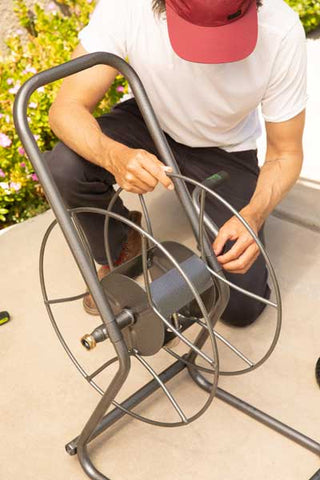
Armed with the knowledge of common hose reel issues and DIY repair techniques, it's time to stock up on the tools and materials you'll need to keep your garden gear in tip-top shape. Here are a few essentials to add to your toolbox:
Replacement Washers: Keep a supply of replacement washers on hand to quickly address any leaks or drips.
Waterproof Sealant or Epoxy: Choose a high-quality waterproof sealant or epoxy for patching up cracks or holes in your hose reel.
Silicone-Based Lubricant: Opt for a silicone-based lubricant to keep the reel mechanism and moving parts operating smoothly without attracting dirt or debris.
Basic Hand Tools: A set of wrenches, screwdrivers, and pliers will come in handy for tackling DIY hose reel repairs.
Expert Advice: When to Call in Professional Help for Hose Reel Repairs
While many hose reel issues can be resolved with DIY repairs, there are some instances where it's best to call in the professionals. If you encounter any of the following scenarios, it may be time to seek expert assistance:
Severe Damage: If your hose reel has sustained significant damage, such as large cracks or structural failure, it's best to have it inspected by a professional.
Complex Repairs: Some hose reel issues may require specialized knowledge or tools to repair effectively. If you're unsure how to tackle a repair or lack the necessary skills, don't hesitate to enlist the help of a professional.
Shop for a New Reel: When all else fails, buy a new, high quality hose reel or hose reel cart from Yard Butler and keep your hoses, your garden, and your HOA happy for many years.
FAQs: Answering Your Burning Questions About Hose Reel Maintenance
Q: How often should I perform maintenance on my hose reel?
A: It's a good idea to perform basic maintenance tasks, such as cleaning and lubricating, on your hose reel at least once a season. However, you should also inspect it for signs of damage or wear regularly.
Q: Can I use WD-40 to lubricate my hose reel?
A: While WD-40 is a popular lubricant, it's not recommended for use on hose reels or other rubber components. Opt for a silicone-based lubricant instead, as it won't degrade rubber parts.
Q: What should I do if my hose reel won't retract?
A: Start by checking for any tangles or obstructions in the hose. If the problem persists, you may need to disassemble the reel mechanism to remove any debris or inspect for damage.
Conclusion: Keeping Your Hose Reel Functional and Reliable for Years to Come
Your hose reel may be a humble garden accessory, but it plays a crucial role in keeping your plants happy and hydrated. With regular maintenance and prompt repairs, you can ensure that your hose reel remains functional and reliable for seasons to come. So roll up your sleeves, grab your toolbox, and give your garden gear the TLC it deserves!




